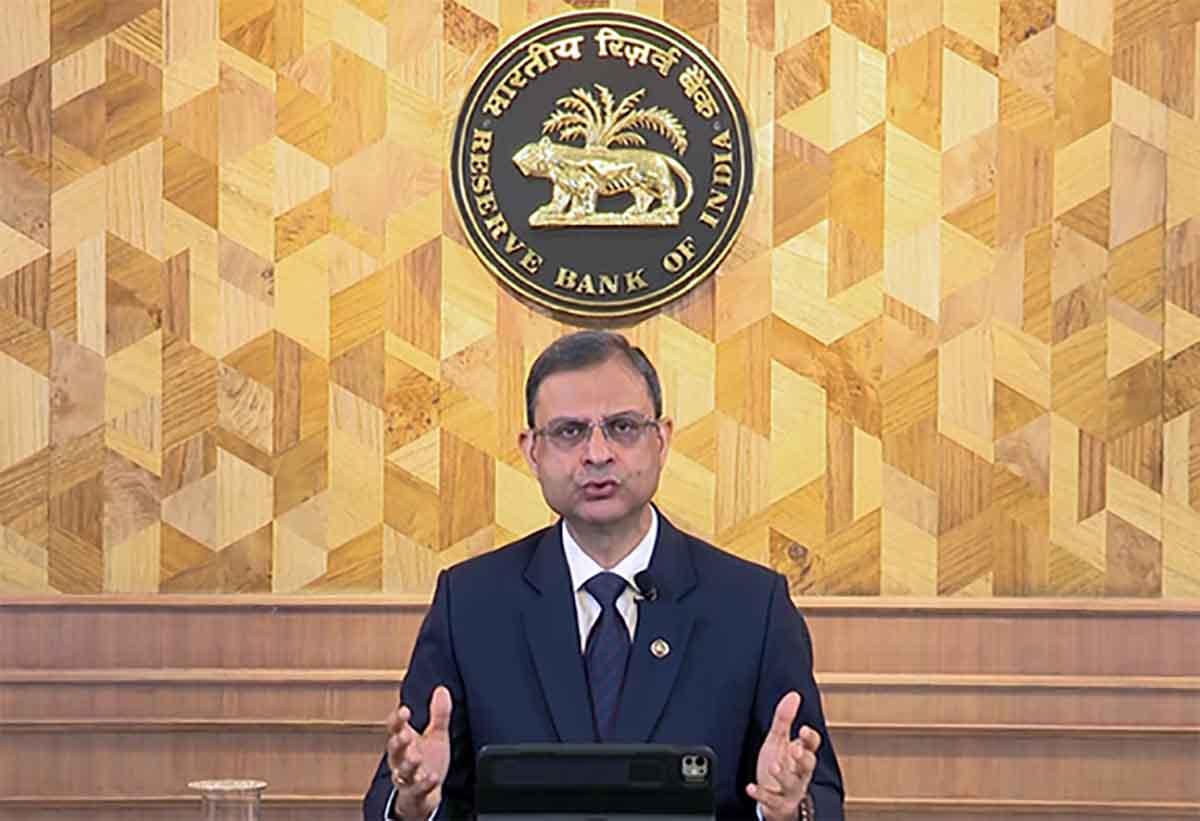On June 6, 2025, RBI Governor Sanjay Malhotra is expected to announce the decision of the bank’s Monetary Policy Committee.

IMAGE: RBI Governor Sanjay Malhotra. Photograph: ANI Photo
The weakening of inflation, prospects of economic growth, geopolitical uncertainty and comfortable system liquidity may result in the Reserve Bank of India’s (RBI) Monetary Policy Committee (MPC) to cut the repo rate by another 25 basis points, opine top economists.
They also said the external economic pressures like trade policies and others would require continued RBI’s accommodative stance and policy support for the Indian industry to sustain the growth.
The repo rate is the rate at which RBI lends to the banks.
Any increase or decrease will have its effect on the lending and deposit rates of the banks.
“The system liquidity is expected to remain ample in Q1 and Q2 FY26, driven by the significant RBI dividend (about Rs 2.7 trillion to the Indian government) and a seasonal drop in currency in circulation.
“The RBI’s accommodative stance is likely to continue, with a 25 basis point repo rate cut anticipated at the June policy meeting and expectations for the repo rate to settle at 5.50 per cent for the remainder of the financial year, further supporting growth and investment,” said Laukik Bagwe, fund manager & head – Fixed Income, ITI Mutual Fund.
According to Bagwe, with the consumer price index (CPI) inflation moderating to 3.16 per cent in April and projected to stay below 4 per cent for most of 2025, the RBI is expected to revise its FY26 CPI target down to 3.80 per cent from 4.00 per cent.
The chief economist at CARE Ratings Rajani Sinha pointing out the fall in inflation to about 3.2 per cent in April, the lowest since August 2019 and stayed below 4 per cent threshold for three consecutive months said it was due to decline in food and beverage prices.
“Inflation in the food and beverages category decreased to 2.1 per cent in April, from a peak of 9.7 per ce in October 2024,” Sinha said.
She said, the core inflation-without food and energy prices in CPI- remains comfortable at 4.1 per cent, despite a slight uptick in recent months, driven by the lower base of last year.
Overall, headline inflation is expected to remain within a comfortable range, closer to the 4 per cent target, over the next few quarters, providing the RBI with the necessary flexibility to prioritise growth concerns.
Sinha expects the RBI to retain its average FY26 CPI inflation projection of 4 per cent, marginally lower than CARE Ratings projection of 4.2 per cent.
“Given the climate-related risks, we have kept the inflation projections slightly higher than the RBI’s,” Sinha added.
On the gross domestic product (GDP) growth, Sinha said it was 7.4 per cent in the fourth quarter of FY25 bringing the full year growth to 6.5 per cent.
According to Sinha, there are concerns relating to the economy that need close monitoring like the subdued manufacturing growth, uneven consumption demand, a delayed recovery in private capital expenditure, and weak exports.
Expecting global economic uncertainty owing to the US tariff policies Sinha said it would have an impact on the private sector capex programme.
“Given this context, a broad-based and durable consumption recovery becomes increasingly critical for a revival in the private capex cycle.
“Factoring in all these aspects, we expect GDP growth to be at 6.2 per cent in FY26.
“However, the RBI is likely to stick to its growth projection of 6.5% in FY26,” Sinha remarked.
Sinha expects the RBI’s MPC to cut the repo rate by another 50 bps in FY26 (including 25 bps in June), with chances of a deeper rate cut cycle if growth falters.
On June 6, 2025, RBI Governor Sanjay Malhotra is expected to announce the decision of the MPC.
The MPC decision is expected to be unanimous.
Venkatachari Jagannathan can be reached at [email protected]




